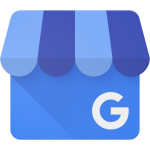Connect CallRail to Google My Business


About CallRail
CallRail provides businesses with tracking phone numbers that they can use to gather valuable customer interaction data from phone calls. This includes the source of the call - an advertisement on social media, for example - as well as information about the callers themselves. Additionally, once a call is completed, CallRail automatically generates a transcript of the call. By gathering this data, CallRail allows businesses to score their leads more easily and gauge the effectiveness of different marketing campaigns.
About Google My Business
The Google My Business API allows you to manage your business locations on Google so that your customers can always find you, no matter what device they’re using.
Popular Use Cases
Bring all your CallRail data to Amazon Redshift
Load your CallRail data to Google BigQuery
ETL all your CallRail data to Snowflake
Move your CallRail data to MySQL
Bring all your Google My Business data to Amazon Redshift
Load your Google My Business data to Google BigQuery
ETL all your Google My Business data to Snowflake
Move your Google My Business data to MySQL
CallRail's End Points
CallRail Companies
CallRail Users
CallRail Accounts
CallRail Integrations
CallRail Trackers
CallRail Calls
Google My Business's End Points
Google My Business Admins
Google My Business Accounts
Google My Business Locations
Google My Business Attributes
Google My Business Categories
Integrate CallRail With Google My Business Today
The no-code pipeline platform for
your entire data journey
TRY IT FREE FOR 14-DAYS

Integrates With
Get Started On Your
Data Integration Today
Powers your company decision making
and operational systems with our one-stop
ETL and data integration platforms
TRY IT FREE FOR 14-DAYS





